Resources
About Us
Food Robotics Market by Product Type (Articulated Robots, Delta & Parallel Robots, Collaborative Robots), Payload, Application, End User, & Geography - Global Forecast to 2035
Report ID: MRSE - 104256 Pages: 239 May-2025 Formats*: PDF Category: Semiconductor and Electronics Delivery: 24 to 48 Hours Download Free Sample ReportThis report examines the global market for food robotics, focusing on how solution providers are responding to the rising labor shortages in the food industry, increasing demand for food safety and hygiene, and the growing need for production efficiency and cost reduction worldwide. It offers a strategic evaluation of market dynamics, forecasts growth through 2035, and assesses competitive positioning at both global and regional/country levels.
Key Market Drivers & Trends and Insights
.webp)
Click here to: Get Free Sample Pages of this Report
The food robotics market is primarily driven by rising labor shortages in the food industry, increasing demand for food safety and hygiene, growing need for production efficiency and cost reduction, and technological advancements in AI and machine learning. The shift towards adoption of vision-guided robotics and flexible and modular robotic systems are reshaping the industry, while cloud-connected and AI-powered food robots are gaining significant traction. Additionally, development of collaborative food robots (cobots) and integration with IoT and Industry 4.0 technologies are further driving market growth, especially in developed markets with advanced food processing infrastructure.
Key Challenges
Although the food robotics market holds substantial growth potential, it encounters several challenges such as high initial investment and implementation costs, complex integration with existing food processing lines, and lack of skilled workforce for robot operation. Furthermore, hurdles like food safety regulatory compliance, handling delicate and irregular food products, and maintenance and cleaning requirements pose significant barriers that could hinder market adoption in different parts of the world.
Growth Opportunities
The food robotics market presents numerous avenues for high growth. Emerging markets offer substantial expansion opportunities for market players looking to reach new customer bases. Development of collaborative food robots (cobots) provides another key opportunity, enhancing the safety and efficiency of food processing operations. Moreover, integration with IoT and Industry 4.0 technologies is generating new revenue streams for solution providers as organizations seek efficient alternatives to traditional manual processing methods.
Market Segmentation Highlights
By Product Type
The Articulated Robots segment is expected to hold the largest share of the overall food robotics market in 2025, due to their versatility in handling complex food processing tasks and growing adoption in meat processing, packaging, and palletizing applications across the globe. However, the Collaborative Robots segment is expected to grow at the fastest CAGR during the forecast period, driven by increasing focus on worker safety, ease of programming and deployment, and the push for flexible automation solutions in food processing facilities.
By Payload
The Medium Payload segment is expected to dominate the overall food robotics market in 2025, primarily due to its optimal balance of handling capacity and precision required for most food processing applications. However, the High Payload segment is expected to grow at the fastest CAGR through the forecast period, driven by increasing automation in palletizing and heavy-duty material handling operations in large-scale food manufacturing facilities.
By Application
The Palletizing & Depalletizing segment is expected to hold the largest share of the overall food robotics market in 2025, due to the high volume of packaging and logistics operations in the food industry and widespread adoption of automated material handling systems. However, the Quality Inspection segment is expected to experience the fastest growth rate during the forecast period, driven by growing emphasis on food safety regulations, increasing consumer awareness about food quality, and adoption of advanced vision and AI technologies for automated inspection.
By End User
The Meat, Poultry, and Seafood segment is expected to hold the largest share of the overall food robotics market in 2025, due to the high labor intensity of processing operations and increasing adoption of automated cutting, deboning, and packaging solutions in specialized facilities. However, the Beverages segment is expected to experience the fastest growth rate during the forecast period, driven by expanding bottling and packaging automation, increasing demand for consistent product quality, and the advantages robotics offers in high-speed production environments.
By Geography
Asia-Pacific is expected to hold the largest share of the global food robotics market in 2025, driven by massive food processing operations, acute labor shortages driving automation adoption, strong presence of leading robotics manufacturers (Fanuc, Yaskawa, Mitsubishi), and significant government and private investments in industrial automation. Additionally, the region's large-scale manufacturing facilities and increasing focus on food safety standards contribute significantly to market dominance. North America follows as the second-largest market, bolstered by advanced manufacturing infrastructure and high labor costs driving automation adoption. However, Asia-Pacific is also witnessing the fastest growth rate during the forecast period, primarily driven by expanding food processing industry, rising wages increasing automation ROI, growing disposable income, and the advantages robotics offers in improving production efficiency and food safety standards.
Competitive Landscape
The global food robotics market is characterized by a diverse competitive environment, comprising established industrial robotics manufacturers, food processing equipment specialists, automation solution providers, and innovative technology startups, each adopting unique approaches to advancing food automation technologies.
Within this landscape, solution providers are segmented into industry leaders, market differentiators, vanguards, and emerging companies, with each group implementing distinct strategies to sustain their competitive edge. Leading companies are prioritizing integrated solutions that merge cutting-edge robotic technologies with comprehensive food processing automation, while also addressing food safety challenges specific to various processing environments.
Key Players
The key players operating in the global food robotics market are ABB Ltd., Fanuc Corporation, Yaskawa Electric Corporation, Kuka AG, Mitsubishi Electric Corporation, Kawasaki Heavy Industries, Ltd., Universal Robots A/S, Stäubli International AG, Denso Corporation, Seiko Epson Corporation, Mayekawa Mfg. Co., Ltd., Omron Corporation (Adept Technology), Autonox Robotics GmbH, Rockwell Automation, Inc., JBT Corporation, Marel hf., GEA Group AG, and Bühler Group among others.
|
Particulars |
Details |
|
Number of Pages |
239 |
|
Format |
PDF & Excel |
|
Forecast Period |
2025–2035 |
|
Base Year |
2024 |
|
CAGR (Value) |
12.4% |
|
Market Size (Value) in 2025 |
USD 1.41 Billion |
|
Market Size (Value) in 2035 |
USD 4.52 Billion |
|
Segments Covered |
Market Assessment, by Product
Market Assessment, by Payload
Market Assessment, by Application
Market Assessment, by End User
|
|
Countries Covered |
North America (U.S., Canada), Europe (Germany, U.K., France, Spain, Benelux, Switzerland, Italy, Poland, Austria, Czech Republic, Hungary, Romania, Slovakia, Turkey, Greece, Rest of Europe), Asia-Pacific (China, Japan, South Korea, India, Australia, Taiwan, Indonesia, New Zealand, Rest of Asia-Pacific), Latin America (Mexico, Brazil, Argentina, Rest of Latin America), Middle East & Africa (United Arab Emirates, Saudi Arabia, South Africa, Rest of Middle East & Africa) |
|
Key Companies |
ABB Ltd., Fanuc Corporation, Yaskawa Electric Corporation, Kuka AG, Mitsubishi Electric Corporation, Kawasaki Heavy Industries, Ltd., Universal Robots A/S, Stäubli International AG, Denso Corporation, Seiko Epson Corporation, Mayekawa Mfg. Co., Ltd., Omron Corporation (Adept Technology), Autonox Robotics GmbH, Rockwell Automation, Inc., JBT Corporation, Marel hf., GEA Group AG, Bühler Group. |
The global food robotics market was valued at $1.30 billion in 2024. This market is expected to reach approximately $4.52 billion by 2035, growing from an estimated $1.41 billion in 2025, at a CAGR of 12.4% during the forecast period of 2025–2035.
The global food robotics market is expected to grow at a CAGR of 12.4% during the forecast period of 2025–2035.
The global food robotics market is expected to reach approximately $4.52 billion by 2035, growing from an estimated $1.41 billion in 2025, at a CAGR of 12.4% during the forecast period of 2025–2035.
The key companies operating in this market include ABB Ltd., Fanuc Corporation, Yaskawa Electric Corporation, Kuka AG, Mitsubishi Electric Corporation, Kawasaki Heavy Industries, Ltd., Universal Robots A/S, Stäubli International AG, Denso Corporation, Seiko Epson Corporation, Mayekawa Mfg. Co., Ltd., and others.
Major trends shaping the market include adoption of vision-guided robotics, flexible and modular robotic systems, cloud-connected and AI-powered food robots, and integration with collaborative robotics technologies.
• In 2025, the Articulated Robots segment is expected to dominate the overall food robotics market by product type
• Based on payload, the Medium Payload segment is expected to hold the largest share of the overall market in 2025
• Based on application, the Palletizing & Depalletizing segment is expected to hold the largest share of the overall market in 2025
• Based on end user, the Meat, Poultry, and Seafood segment is expected to hold the largest share of the global market in 2025
Asia-Pacific is expected to hold the largest share of the global food robotics market in 2025, driven by massive food processing operations, acute labor shortages driving automation adoption, strong presence of leading robotics manufacturers, and significant government and private investments in industrial automation. Asia-Pacific is also witnessing the fastest growth rate during the forecast period.
The growth of this market is driven by rising labor shortages in the food industry, increasing demand for food safety and hygiene, growing need for production efficiency and cost reduction, and technological advancements in AI and machine learning.


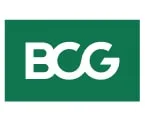
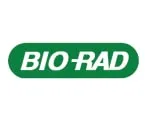
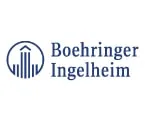

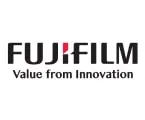

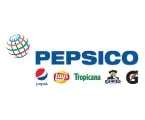
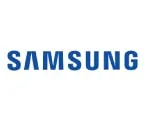





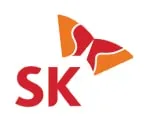
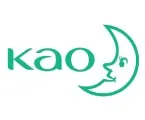

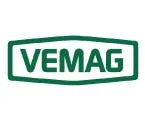





Published Date: Nov-2024
Published Date: Nov-2022
Published Date: Sep-2022
Published Date: Jun-2024
Please enter your corporate email id here to view sample report.
Subscribe to get the latest industry updates